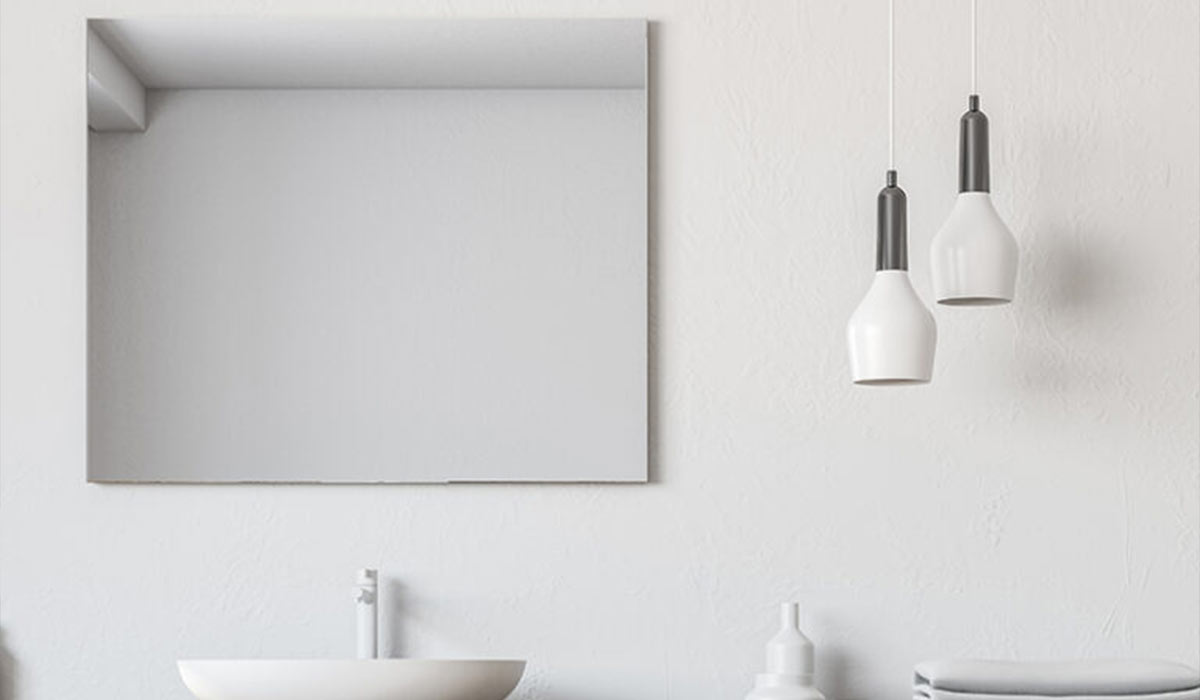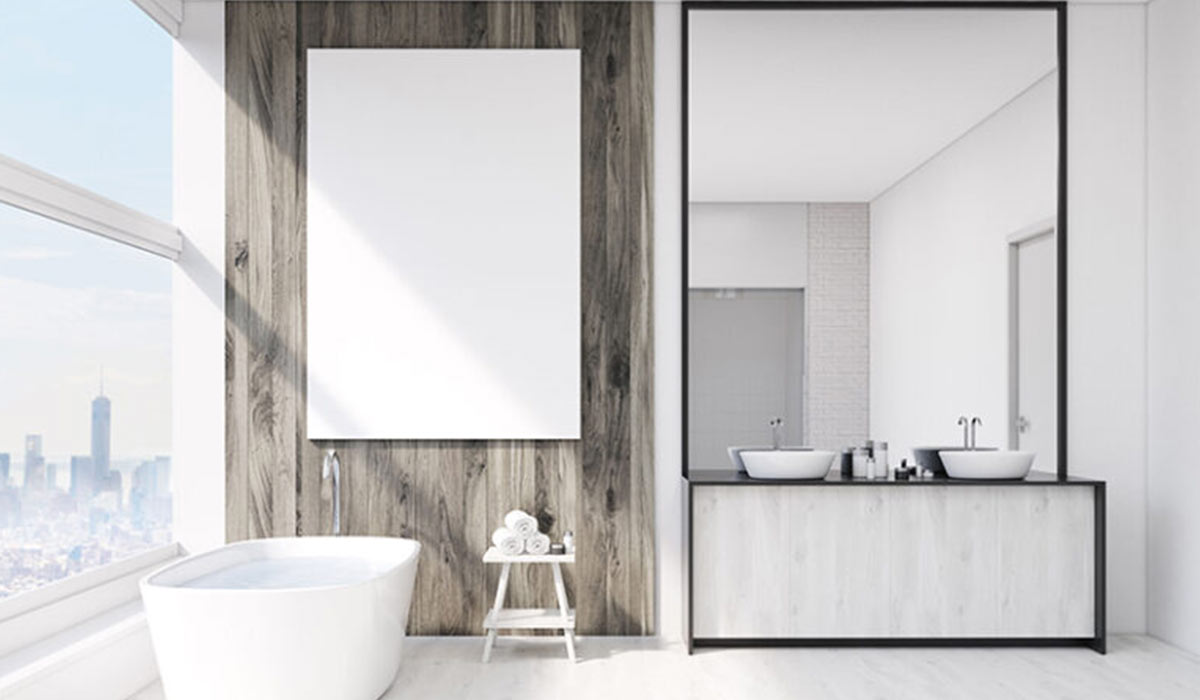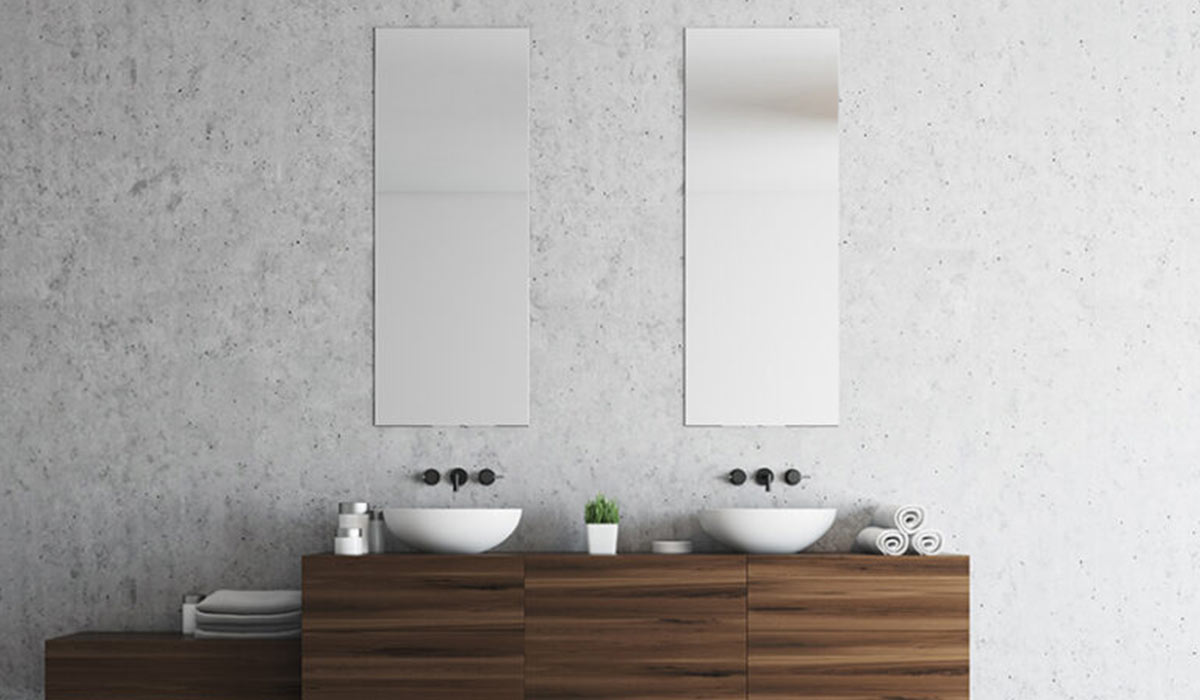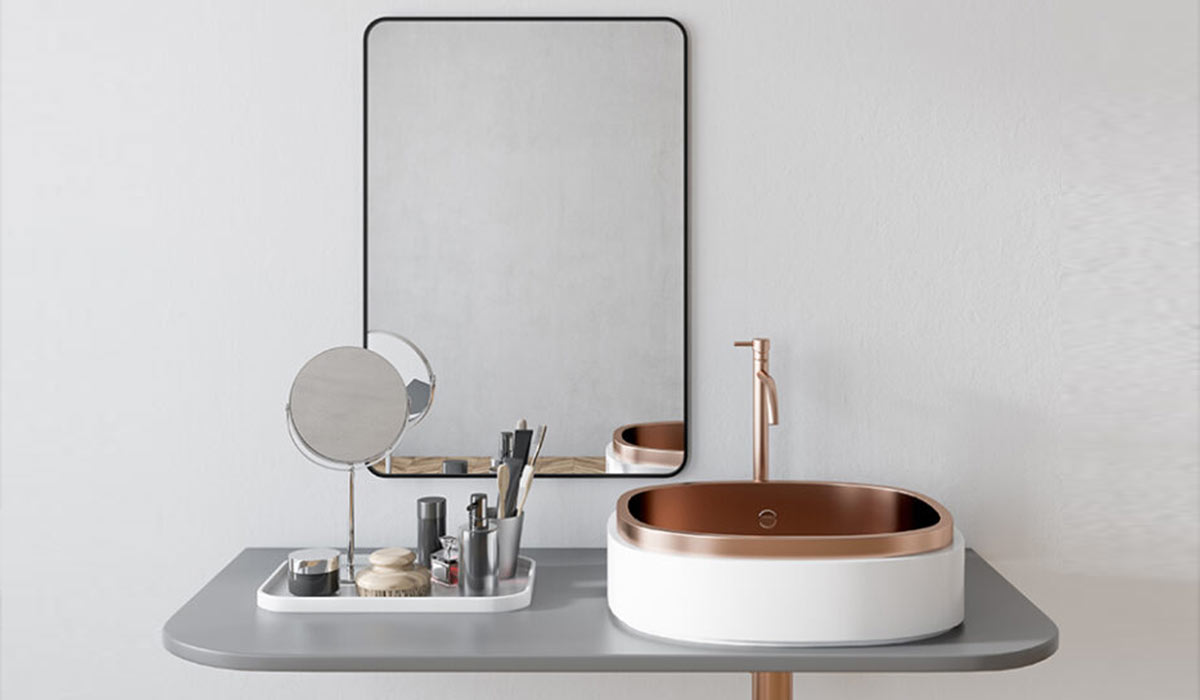Think of all the mirrors you used growing up in your home or at your parent’s house. Whether it’s a small mirror that opens up a medicine cabinet or a large mirror that covers an entire wall, there’s no shortage of mirrors in a bathroom.
Do you have a wall mirror in your room? Are there decorative mirrors hanging in the hallway? Is there a mirror by the door so mom can quickly check her makeup when she leaves the house in the morning?
Mirrors aren’t just for checking your makeup or making sure the outfit you’ve chosen for the day fits. Sure, they’re great for these uses—and most people can’t live without them—but they also make wonderful decorative additions to any room in your home.
Floor-to-ceiling mirrors in guest rooms are perfect for showing your visitors a little extra hospitality as they check themselves in before heading downstairs for breakfast. A series of small mirrors can be placed in a pattern to reflect light and make a room appear brighter and larger. A beautifully framed mirror in a living room or hallway can be as dramatic and elegant as a painting.
In this article, we’ll introduce you to the different types of mirrors, how to use them, and where you might want to install them. We’ll discuss shapes and sizes that are suitable for different rooms. We’ll discuss styles and frame materials. We’ll even give you some tips on when to install mirrors yourself when to hire a professional, and what to look out for when ordering mirrors from a bathroom mirror supplier online.

1. What are the different types of mirrors?
Let us first guide you through everything you need to know about purchasing and installing mirrors. First, we’ll discuss five basic types of mirrors you might want to consider for different rooms in your home.
1) Wall Mirror
A wall mirror is any mirror that is mounted on a wall. It can be a large rectangular mirror without a frame, or an oval or heart-shaped mirror with an ornate filigree frame.
2) Decorative mirror
Decorative mirrors are usually small wall mirrors. They can be molded into silhouettes of birds, silhouettes of flowers, or other fun and beautiful shapes. They can be small square mirrors that you can arrange in a pattern so that everything they reflect looks like a mosaic.
Some decorative mirrors are simple in shape but ornately framed to add style to a room. Basically, if it’s beautiful and can hang on the wall, it might be considered a decorative mirror.
3) Bathroom mirror
As a bathroom mirror, you can use almost any kind of wall mirror. If you want to give your bathroom a modern feel, you can arrange a rectangular grid consisting of small decorative mirrors placed closely together. You can use a large rectangular mirror without a frame, or you can opt for a more decorative bathroom mirror to add a unique touch to your bathroom.
More and more people are opting for more interesting mirrors for their bathrooms. Two old standards in bathrooms are rapidly disappearing. Small mirrors that hide medicine cabinets used to be the norm, but at least in most medium- and large-sized bathrooms, it’s been replaced by mirrors that span the width of the bathroom counter, often nearly as large as the wall.
Large mirrors make a great replacement for those little medicine cabinets, but they don’t add much style to the room. In a half-size mirror, you can see yourself however you want, which means the mirror itself can be a more interesting shape. It also leaves room for more interesting wall decorations.
4) Large mirror
If you have a small room with plenty of natural light, a large mirror on one wall can add depth to the room and make it appear more spacious. Large mirrors are also great for bathrooms and bedrooms, especially when you want to get an overview of what you’re wearing that day.
The right large mirror can set the mood in a room, creating a larger, airier feel. A picture frame can be a welcome addition to a room’s design if it complements the other furniture and accessories in the room.
5) Floor mirror
A floor-standing mirror is a full-length mirror whose frame stands upright without support. Floor-to-ceiling mirrors can often be tilted, which can create longer, more interesting reflections than wall mirrors. Don’t want to feel tall and slim every morning at work?
People often opt for floor mirrors because they have a certain classic look. You can find an oval mirror in a brass frame and stand, or opt for a wooden rectangular frame. Floor mirrors are also versatile. You can move the mirror from room to room depending on who wants to use it, if you are renovating, or if you just want to move the mirror from room to room for your own reasons.

2. The shape of the mirror
A large flat mirror that covers half or more of the bathroom wall seems to be the best choice as it will create a nice reflection. But when you look in the mirror, do you really need to see all the bathtubs, laundry baskets and everything else in your room? From a design standpoint, a slightly smaller, more interestingly shaped mirror might be the better decision.
Large oval mirrors with interesting frames are gaining popularity as bathroom mirrors because one of them can reflect you, your clothes, and everything else you need to see, and look more interesting than a plain rectangle without a frame.
When it comes to choosing a mirror, no matter what kind of mirror it is, there are usually a variety of shapes to choose from. Most floor mirrors are oval or rectangular, but even these sometimes have options you might not have thought of. Before you settle for a boring rectangle without a frame, consider your interior design tastes and the style you’ve cultivated in every room in your home.

3. Frame material and finish
If you decide to invest in a mirror that really makes a statement, you can choose from a variety of frames made of different materials and finishes. These include wood, aluminum, glass, bronze, and copper. As with any decorative or accessory, you add to a room when choosing a framed mirror you need to consider the style of the room in which it will be placed. Is the rest of the room decorated in warm dark wood tones? A mirror with a brushed aluminum frame might look a little out of place, but one with a bronze or dark wood frame might look just right.
If your bathroom has a very modern style, you might want to consider a glass-framed mirror. Opaque white or black glass makes for a beautiful frame that also complements your modern theme. In addition to the material of the frame, you also need to consider its finish. The frosted glass frame gives the mirror an understated look without being too bland. You can choose a wood frame with a high-gloss finish, but again, you’ll want to make sure it matches the furniture and other accessories in the room you’ll place it in.

4. What are beveled mirrors and non-beveled mirrors?
The beveled mirror has non-vertical cutouts along the edges for added style. Think of the bevels on the mirror as wall moldings, if the walls were actually cut into those shapes instead of adding the moldings as separate pieces to the corners of the walls and ceiling.
Chamfering or not is entirely up to you and your taste. Some people like a little more texture on the edge of the mirror next to the frame. Others prefer the mirror to be flat, allowing the frame to stand out more. If you decide you want a decorative mirror without a frame, a beveled mirror might be a good choice. It will add some detail to the shape of the mirror while keeping it minimal and simple.
5. Precautions for installation
Now that you have some knowledge of the different types of mirrors, frames, and beveled mirrors, you have enough information to start finding the best mirror for your purposes. Once you’ve found it, you’ll need to consider a few factors that affect your installation. Here’s what you need to know when deciding where to mount your mirror and whether to install it yourself or hire a professional to hang it for you.
If you decide to install the mirror yourself, be sure to research the glues, caulks, and/or mounting hardware recommended by the mirror manufacturer. If you follow the manufacturer’s instructions closely, you’re less likely to see your mirror fall off the wall and shatter. If it does fall off, you’re more likely to have the manufacturer replace the mirror or get your money back.

6. Mirror weight
If you have several small decorative mirrors around your living room, you can use mirror mastic or other superglue to glue them into place. You don’t have to worry about the weight of the mirror pulling it off the wall.
However, if you are going to hang a larger mirror, you should know that it can get quite heavy. If you’re hanging it on a nail or screw, you’ll need to find the studs in the wall, some people can do this by tapping on the wall and listening for the difference in sound. You can use a stud finder if you are not able to hear the difference in sound. You’ll want to make sure you’re driving nails or screws into the studs, not just the drywall. Otherwise, your mirror is more likely to be pulled from the wall, dropped, and shattered.
If any of this information makes you very nervous about installing a mirror, you may want to contact a professional. If you bought your mirror locally, you can ask the person who sold it to you who they recommend for installation. They have a vested interest in your satisfaction, so they may recommend the best contractor for the job.

7. Shipping and handling issues
Weight isn’t just a factor for installation either. If you’re buying a large mirror online, you should know its weight and the shipping and handling charges the seller charges. You should also check their return policy for any provisions. If they cannot guarantee that the mirror arrives in your hands in perfect condition, you should not buy a mirror from them.
If their return policy is unclear, but the price is too high to refuse, you may want to ask about buying shipping insurance. That way, if anything happens on the way to you and you can’t return the mirror, you’ll still be protected.
Now you have the basic tools you need to choose the right type of mirror for your needs. You can beautify a boring room or add the illusion of more space. You can check off your entire outfit with a decorative piece that will complement any room. It will make a great addition if you choose the right mirror for your home. Have fun selecting and installing your new mirror!

8. What are some tips for cleaning mirrors?
You’ve probably seen plenty of commercials and advertisements for products that claim to keep glass and mirrors clean and streak-free. You might even have purchased some of these products. There are special cleaners, special cleaning cloths, and special treatment methods that can prevent the mirror from getting dirty in the first place. If you’ve tried them, you know that most of them don’t work as advertised.
But luckily, there’s an easier and better way. You only need a few things for a clean, streak-free mirror. You’ll need a soft cloth, some old newspapers, a bucket, and white vinegar.
